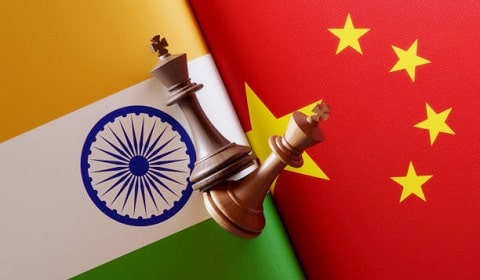
Next China
In recent years, discussions around India’s potential as the ‘Next China’ in terms of economic growth and global influence have gained significant traction. With a burgeoning population, a growing tech sector, and an expanding middle class, India appears poised for rapid advancement on the world stage.
India’s unique challenges distinguish it from China’s rapid ascent, requiring tailored strategies for sustainable economic progression toward the goal of becoming the next China.
Table of Contents
Next China
India, while poised for growth, faces distinctions from China on its path to becoming the next China as an economic superpower. First, India’s manufacturing landscape lacks the scale and infrastructure China cultivated for decades.
Then, bureaucratic complexities and regulatory hurdles hamper swift economic transformations. Lastly, socio-economic disparities and literacy gaps remain substantial, impacting overall productivity and growth.
However, several critical factors set India apart from China, Economic superpower, in its journey towards becoming an economic superpower. Here are three key reasons why India may not replicate China’s economic trajectory.
1. Infrastructure and Manufacturing Disparities
One of the foundational pillars of China’s economic ascent was its robust infrastructure development and manufacturing prowess. China’s investment in modern infrastructure, including high-speed rail networks, extensive ports, and manufacturing hubs, facilitated unparalleled growth in export-oriented industries. In contrast, India, next China, faces persistent challenges in infrastructure development.
According to the World Bank, India’s logistics costs amount to 14% of its GDP, significantly higher than China’s 8-10%. Insufficient infrastructure leads to increased transportation costs, hindering the competitiveness of Indian goods in the global market.
Moreover, China’s dominance in manufacturing, particularly in sectors like electronics, automobiles, and textiles, has been unparalleled. While India has made strides in sectors like pharmaceuticals and IT services, its manufacturing sector contributes only around 15-16% to the GDP, significantly lower than China’s nearly 30%. The lack of a comprehensive manufacturing ecosystem, including supply chain efficiency and skilled labor availability, hampers India’s ability to compete with China in global manufacturing.
According to the Global Competitiveness Report by the World Economic Forum, India ranks lower than China in infrastructure (58th vs. 36th), technological readiness (71st vs. 44th), and labor market efficiency (103rd vs. 54th), underscoring the disparities that hinder India’s leap towards economic superpower status.
According to the World Bank’s Logistics Performance Index, India scored 3.50 out of 5 in 2020, while China scored significantly higher at 4.73. The Global Competitiveness Report 2021 ranks India 58th in infrastructure quality, whereas China holds the 36th position. In terms of manufacturing, India’s manufacturing sector contributes around 15-16% to the GDP, while China’s manufacturing accounts for nearly 30% of its GDP (World Bank data).
2. Demographic Dividend vs. Human Capital Challenges
India boasts a young demographic profile, often touted as a potential demographic dividend that could drive economic growth. However, the realization of this dividend depends on the effective utilization of the workforce through education, skill development, and job creation. While India has made strides in improving literacy rates and expanding access to education, quality remains a significant concern.
According to the ASER (Annual Status of Education Report) by Pratham, a non-governmental organization in India, a significant portion of Indian students lacks foundational skills in reading and mathematics. The 2021 report highlighted that around 25% of Indian children in grade 3 could not read a grade 2 level text. Such educational disparities contribute to a lack of skilled labor necessary for a thriving economy.
Data from the World Bank shows that India’s literacy rate stood at around 74% in 2021, while China boasts a higher literacy rate of over 96%. China, on the other hand, has consistently invested in its human capital, emphasizing education and skill development. Its focus on STEM (Science, Technology, Engineering, and Mathematics) education has contributed to a skilled workforce that played a pivotal role in China’s economic growth.
3. Policy Reforms and Governance Challenges
The policy environment and governance play a crucial role in shaping a country’s economic trajectory. While India has undertaken several reform measures to improve its business climate and attract foreign investment, bureaucratic red tape, regulatory complexities, and inconsistent policies continue to impede progress.
The World Bank’s Ease of Doing Business Index ranks China ahead of India, often referred to as the next China (as of the latest available data) in overall ease of doing business, highlighting the bureaucratic hurdles that businesses face in India. Additionally, India’s complex tax structure, despite recent reforms such as the Goods and Services Tax (GST), remains a challenge for businesses operating in the country.
China’s ability to implement long-term economic plans and execute policies with relative efficiency has been a cornerstone of its economic success. India’s democratic setup, while conducive to diversity and inclusion, sometimes leads to slower decision-making processes and challenges in policy implementation.
The World Bank’s Ease of Doing Business Index (2022) ranked India at 63rd place, trailing behind China, world factory, which stood at 31st place in the same index. India’s complex tax structure and regulatory hurdles often cited in various reports, including the Doing Business Report by the World Bank and the Global Competitiveness Report by the World Economic Forum.
Bottom Line
While India possesses significant potential for economic growth and global influence, several structural, educational, and governance challenges differentiate it from China’s rapid ascent as an economic superpower. India’s emergence as the ‘next China’ requires addressing these challenges through concerted efforts in infrastructure development, enhancing human capital, and fostering a conducive policy environment.
India’s path towards economic prowess may not mirror China’s trajectory, but strategic reforms and consistent efforts could pave the way for sustained and inclusive growth on its own terms.





